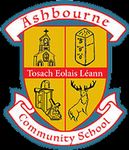Air Pollution - The Silent Killer - pulchra platform
←
→
Page content transcription
If your browser does not render page correctly, please read the page content below
Air Pollution - The Silent Killer Air quality investigation at Ashbourne Community School By Transition Year students, Ava Carroll, Rhys Dagger, Emily Dunne, Leo Feeney, Niall Moran, Roisin Moss, and Áine Young; and mentor, Irene Hughes. Background Air pollution kills an estimated seven million people worldwide every year, largely due to increased mortality from stroke, heart disease, chronic obstructive pulmonary disease, lung cancer and acute respiratory infections. The World Health Organisation (WHO) has identified air pollution as a silent killer that lurks around us, preying on the young and old. It is a major environmental risk to health, with 91 % of the population living in places where the WHO air quality guidelines were not met, in 2016. (1) To protect our health, vegetation and ecosystems, EU directives set down air quality standards in Ireland and the other member states for a wide variety of pollutants. The Environmental Protection Agency (EPA) manages the ambient air quality monitoring network in Ireland. They have established an Air Quality Index for Health, shown below. (2)
Figure 1: The Air Quality Index for Health (EPA)
Scientific predictions forecast a planet with “unbreathable air”, where checking the air
quality on our phones will be more important than checking the weather forecast before we
step outside in the years ahead. Already more than 10,000 people die from air pollution
daily. Predictions estimate by 2090, as many as 2 billion people globally will be breathing air
that is polluted above the WHO “safe” level. (3)
The world we are creating will be a scary place unless we make some tough choices in the
critical decade we are currently journeying through. The future we choose depends on who
we choose to be, consumers or citizens. Mahatma Gandhi reminds us to be the change we
want to see. (4)
We are playing our role as active citizens by investigating the air quality in our school
locality, raising awareness within the school community of the dangers air pollution poses to
our health and looking at alternatives to the current sources of air pollution to which we are
exposed. Though our project is local, its implications are global.
Global Goals
As a school that embraces the United Nations Sustainable Development Goals, we
recognise that four of the 17 goals are embedded in this project.
3. Good Health and Well-Being
7. Affordable and Clean Energy
11. Sustainable Cities and Communities
15. Life on LandFigure 2: The UN Sustainable Development Goals Aims Just breathe. In our project we focus on what we breathe and how air quality is deteriorating due to our everyday actions. Our aims are to: 1. Monitor the air quality in the locality of our school. 2. Raise awareness in our school and community regarding our findings. 3. Investigate the activities that damage air quality, specifically transport related. 4. Look at green transport alternatives that will protect the most essential of human requirements, the need to breathe. 5. Research the health implications of air quality deterioration. 6. Investigate the actions we can take to improve air quality in the vicinity of the school and community. Method Ashbourne Community School is a large (1,100 students), mixed secondary school, positioned to the south of Ashbourne, Co Meath, on the busy Dublin Road (R135). Many students live in Ashbourne, but a large percentage commute from the surrounding countryside and many small villages in the feeder area. The Ashbourne topography is largely flat, and the school is positioned on a level site between the Broadmeadow river and the main commuter route to Dublin. We began our investigation with a traffic count on this route, results shown below.
We tested the concentration of Nitrogen Dioxide (NO2) around our school area using six passive diffusion tubes, supplied by The Globe programme. The tubes were attached to posts in the area on Thursday 15th October 2020 and returned to the laboratory for analysis on Thursday 12th November 2020.
Figure 3: Photos of the team busy collecting the samples and the diffusion tubes ready for posting for analysis. We enlisted the help of fellow TY students who are #andshecycles Ambassadors to investigate and promote cycling as a suitable alternative transport to and from school. We have excellent cycle paths in the area and many boys cycle to school. However, we are aware the numbers of girls using bikes are very poor and are actively campaigning to reduce this problem. Results The traffic count highlighted for us the sheer volume of traffic that passes the school every day. Even though this data was collected during Covid-19 lockdown conditions, 20,000 vehicles still travelled this route daily. Figures 4 and 5 (below) show the locations and results of the traffic survey and the NO2 diffusion tubes. The concentration of NO2 captured in the diffusion tubes was analysed by a laboratory. The laboratory then applied a correction to express this concentration in terms of a cubic metre. Each result represents an average NO2 concentration, expressed in micrograms per cubic metre of air (µg /m3), that was captured over the four-week period of our study. Considering this sampling period included the Halloween midterm break and took place during the Covid-19 pandemic, when the population was under strict restrictions regarding travel and with huge numbers working from home, one can expect the data collected to be below the norm for the area.
Figure 4: A satellite image of traffic count taken in front of school. Figure 5: The red pins mark the locations of the diffusion tubes in relation to Ashbourne Community School. The number above each pin represents an average NO2 concentration, expressed in micrograms per cubic metre of air, that was captured over a four-week period.
Findings
1. From our traffic count we have learned that approximately 20,000 vehicles pass the
front of our school daily. However, this data was collected during the last week in
October 2020, when Level 5 restrictions had just been reintroduced, so we expect
these numbers are artificially low.
2. From our NO2 map, we can see the immediate school area is in the low to medium
rating while the road in front of the school moves into the medium section on the
new NO2 concentration scale. As the prevailing winds are south-westerly and the
terrain is flat around the school, local winds carry the higher levels of NO2 from the
road towards the school.
3. While an average of 60 boys cycle to school daily, we only have one girl who
regularly cycles. We have recently installed new bike racks and have more coming as
soon as restrictions lift. We are working on several campaigns to promote cycling;
however, they are currently on hold due to pandemic restrictions.
We must note here two factors which must be considered when analysing the results.
Firstly, due to Covid-19, many people were working from home during these recordings,
reducing normal traffic numbers. Secondly, public transport was severely affected due to
social distancing. People who generally used public transport were forced to drive,
increasing traffic volumes. We cannot put figures on either of these changes so cannot
judge their statistical significance.
Where do we go from here?
Our plan includes the following recommendations.
1. To continue raising awareness within our school community and beyond regarding
the health concerns surrounding NO2 levels, particulate matter and all aspects of our
deteriorating air quality.
2. Investigate the feasibility of planting a protective “shelter belt” of trees between the
R135 and our school.
3. Consult with local authorities regarding new regulations to distance the school drop-
off traffic from the proximity of the school.
4. Continue to research alternative sustainable transport links between Ashbourne and
Dublin. Unfortunately, we live in a society where the car is king and green options
need to be made available.
References.
1. WHO—Air Quality Guidelines.
2. EPA—Air Quality Standards.
3. The Uninhabitable Earth. A story of the Future. By David Wallace-Wells.4. The Future We Choose. Surviving the Climate Crisis. By Christiana Figueres and Tom
Rivett-Carnac.
5. Breath by James Nestor.
6. As we have several Climate Ambassadors on our team, we used a Climate
Ambassador lockdown “zoom” on Air Quality and Sustainable Transport as starting
point. The chief contributors to this meeting were Dr Kirsten Fossum (NUIG, Galway),
Sabrina Moore (The Globe Programme) and Jane Hackett (Green school’s travel
Officer). Their talks formed the foundations of our project.
Acknowledgements.
Thanks to Bernadine Carey from Meath County Council for sorting the traffic count for us.
Thanks to Aileen Bright from The Globe Programme for the diffusion tubes and her diligence
and support throughout.You can also read



























































